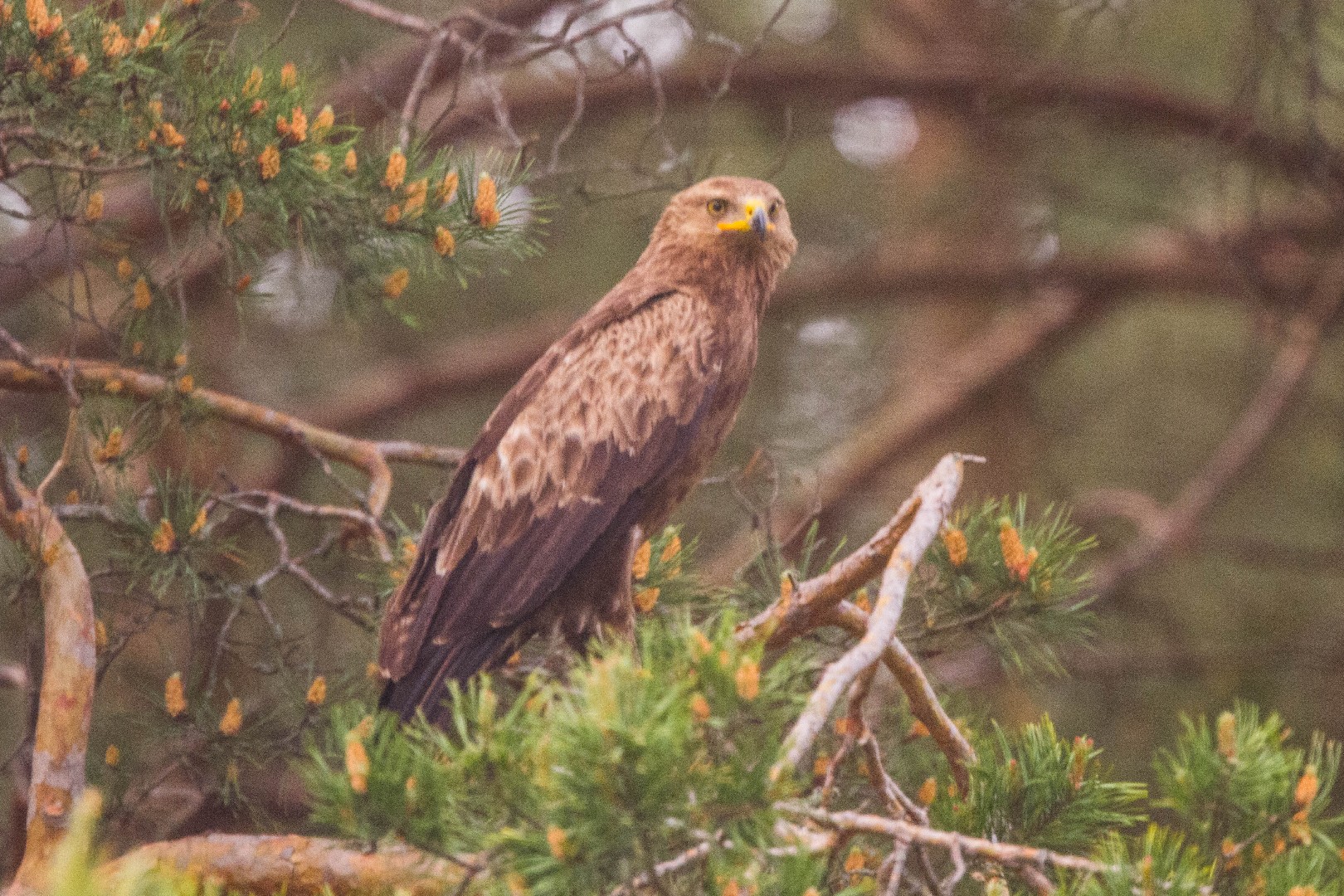Lesser Spotted Eagle
A species of Greater True Eagles Scientific name : Clanga pomarina Genus : Greater True Eagles
Lesser Spotted Eagle, A species of Greater True Eagles
Botanical name: Clanga pomarina
Genus: Greater True Eagles
Content
Description General Info
 Photo By Ron Knight from Seaford, East Sussex, United Kingdom , used under CC-BY-2.0 /Cropped and compressed from original
Photo By Ron Knight from Seaford, East Sussex, United Kingdom , used under CC-BY-2.0 /Cropped and compressed from original Description
This is a medium-sized eagle, about 60 cm (24 in) in length and with a wingspan of 150 cm (59 in). Its head and wing coverts are pale brown and contrast with the generally dark plumage. The head and bill are small for an eagle. Usually, a white patch occurs on the upper wings, and even adults retain a clearly marked white "V" on the rump; the wing markings are absent and the white "V" is not well-defined in the greater spotted eagle. The juvenile has less contrast in the wings, but the remiges bear prominent white spots. It differs from greater spotted eagle juveniles by a lack of wing covert spotting and the presence of a cream-colored neck patch. The call is a dog-like yip. 
Size
64 cm
Life Expectancy
17 years
Nest Placement
Tree
Dite type
Carnivorous
General Info
Feeding Habits
Bird food type
Distribution Area
The lesser spotted eagle breeds in Central and Eastern Europe and southeastward to Turkey and Armenia; and winters in Africa. This is a very wary species of open or lightly wooded country, in which it hunts small mammals and similar terrestrial prey. This eagle lays one to three white, buff-spotted eggs in a tree nest. As usual for eagles, only in breeding seasons with very abundant prey does more than one young fledge, but the female starts incubating when the first egg has been laid, thus the first young to hatch usually outgrows its clutch mate(s) and will kill and even eat them sooner or later. The territories of Lesser Spotted Eagles are spaced regularly and consistently between years in the north-western part of their distribution. The distances between territories vary across the region, although this was not found to be related to breeding success. Synchronous variation in breeding success across the region indicates that the eagles are instead influenced by large-scale factors such as fluctuations in climate or prey availability. 

 Photo By Ron Knight from Seaford, East Sussex, United Kingdom , used under CC-BY-2.0 /Cropped and compressed from original
Photo By Ron Knight from Seaford, East Sussex, United Kingdom , used under CC-BY-2.0 /Cropped and compressed from original